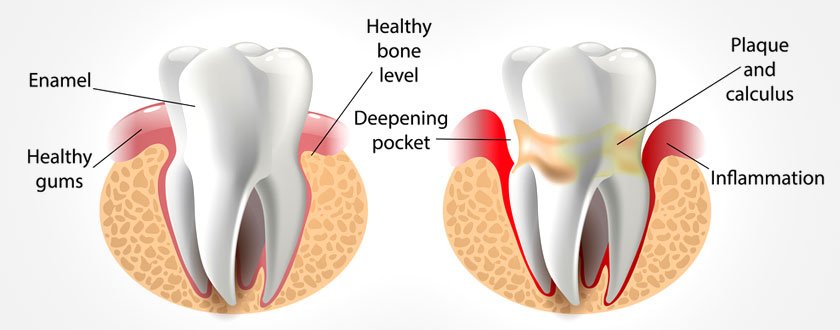
Gum Treatment
Gum infection is very common. It is one of the most serious of all oral infections as it slowly destroys the bone around the tooth. It is also the most easily prevented with the right care. Gums are referred to the pink tissue that surrounds the teeth. when seen in cross-section it comprises of the gingiva and the bone. The most important aspect in the understanding of gum disease is the underlying bone( called alveolar bone ).
Treatment of gum disease differs widely and is not simple and straightforward. Gum disease can be of varying severity and depending on the severity of the disease the treatment is prepared. The best treatment for gum disease requires us to first evaluate the severity. The severity of the gum disease can only be assessed with the help of a Radiograph or an OPG. This shows us the amount of bone present.

Phosfluorescently engage worldwide method-
ologies with web-enabled technology.
Interactively coordinate
- Word Class Amenities and Comfort
- Relaxing Message Chairs for Maximum Comfort
- High Definition - Low Radiation Digital X-Rays
- Enjoy a Refreshment from our Beverage Station
More information & Frequently asked questions
What is gum treatment??
Gum treatment involves various procedures aimed at improving gum health, addressing issues like gum disease, inflammation, and other periodontal problems.
What are the common signs that I need gum treatment?
Look for symptoms such as bleeding gums, swollen or tender gums, persistent bad breath, and gum recession. If you notice any of these, consider seeking treatment.
Is gum treatment painful?
Most treatments are performed under local anesthesia, so discomfort is minimal. Post-treatment soreness may occur but can usually be managed with over-the-counter pain relief.
Can gum treatment reverse gum disease??
Early-stage gum disease can often be reversed with proper treatment and care. However, advanced gum disease may require more extensive treatment and management.